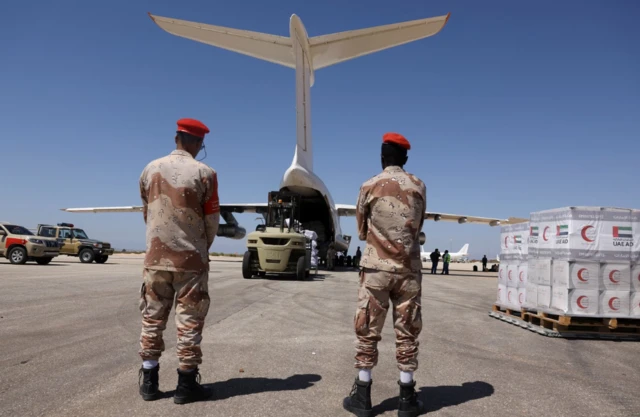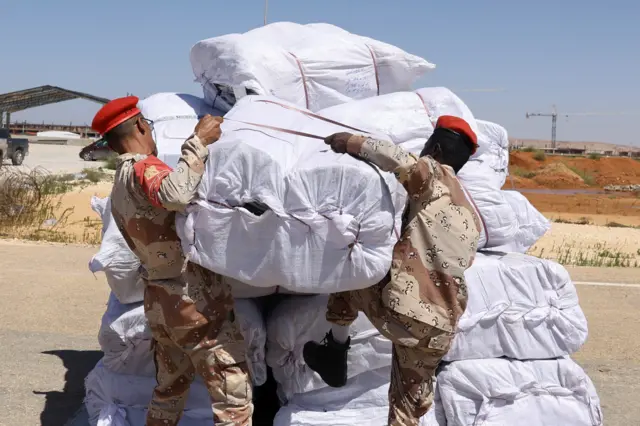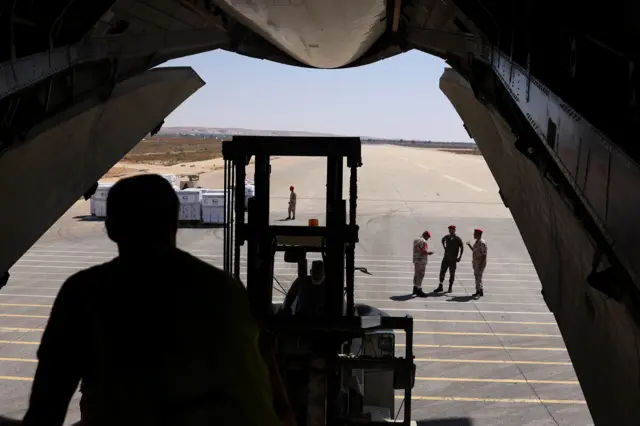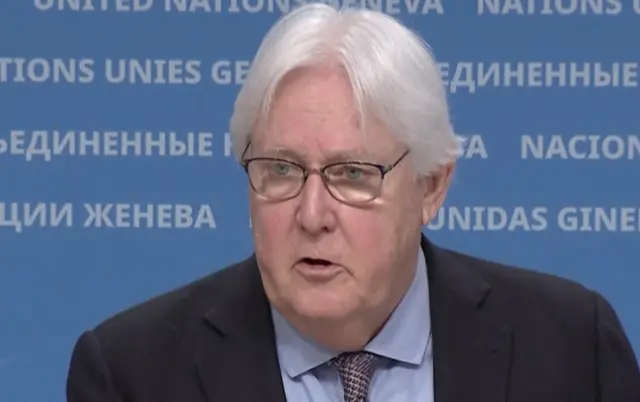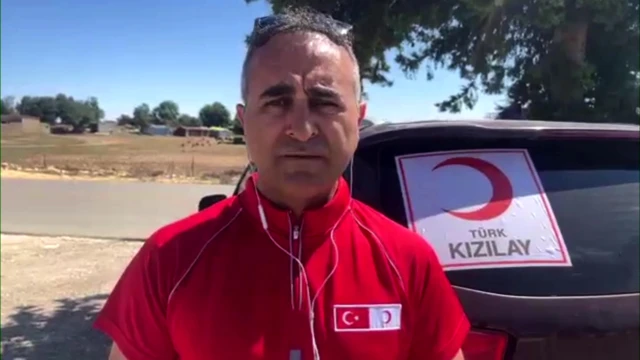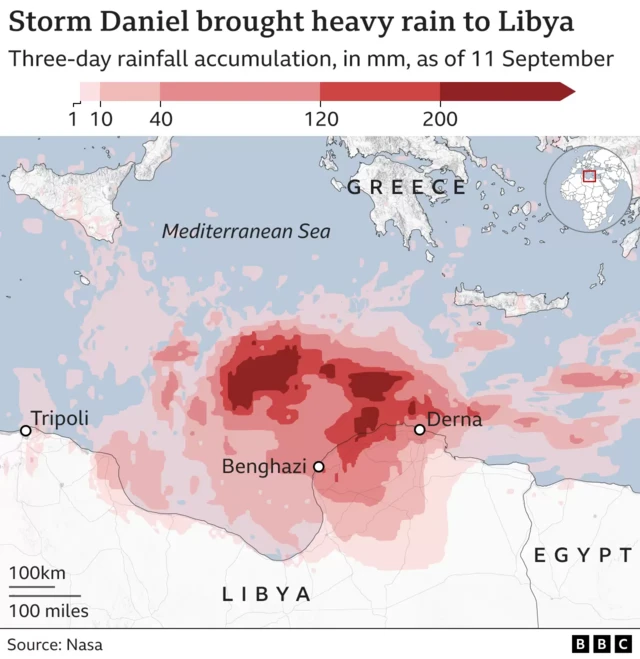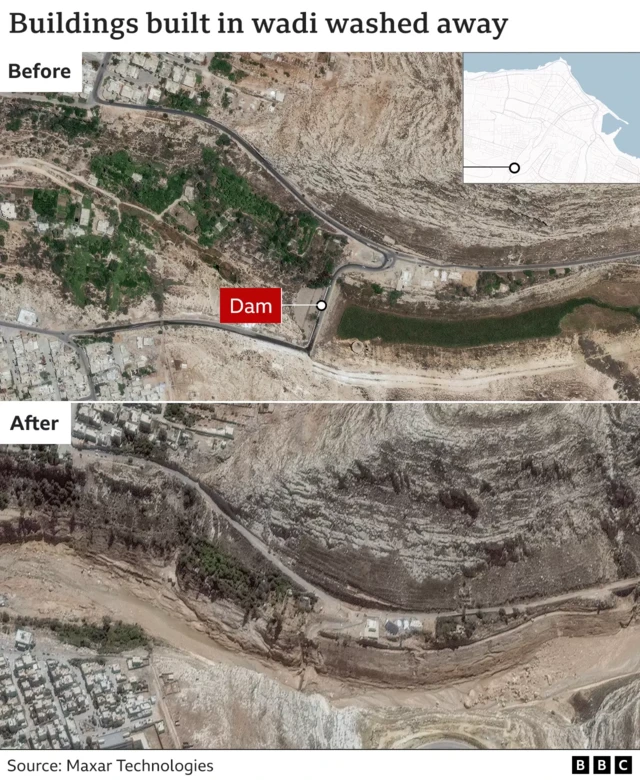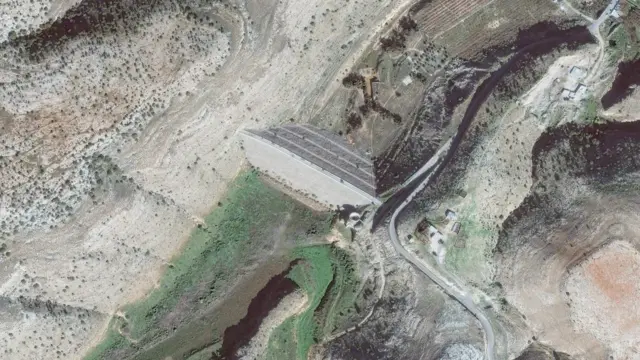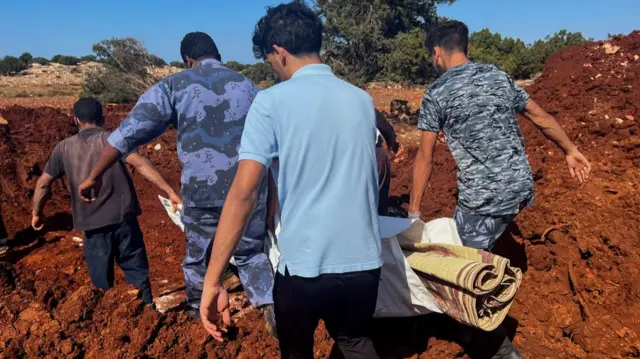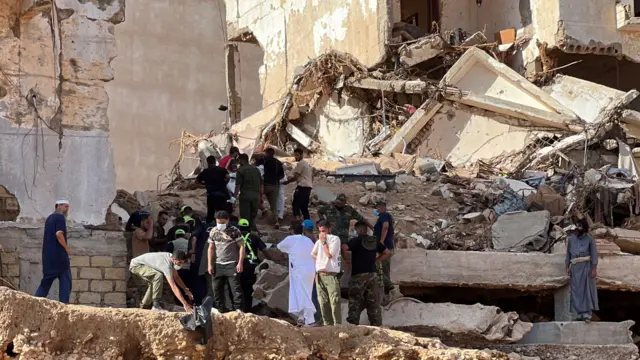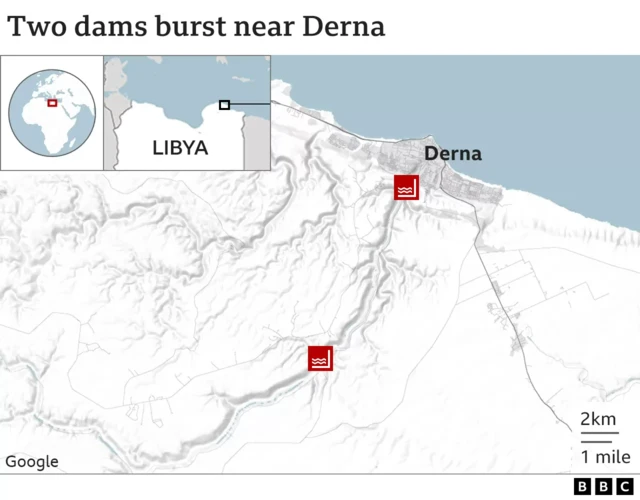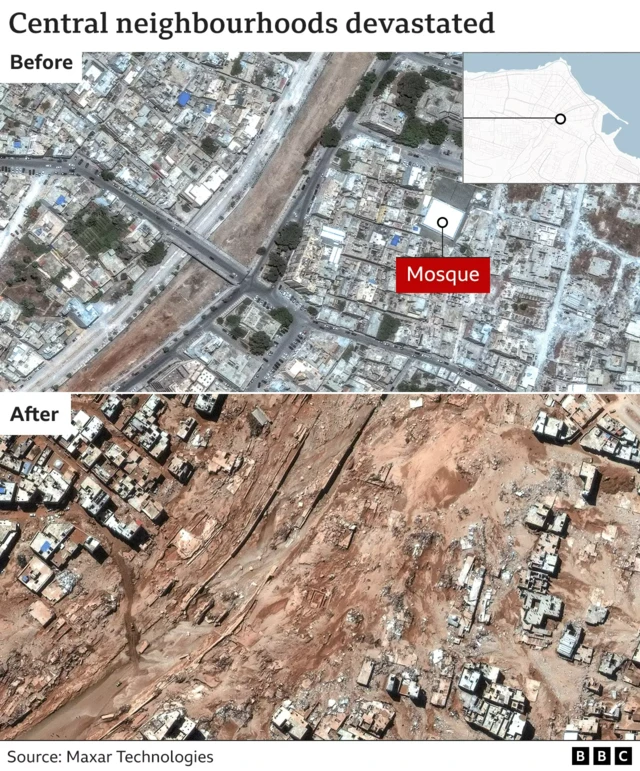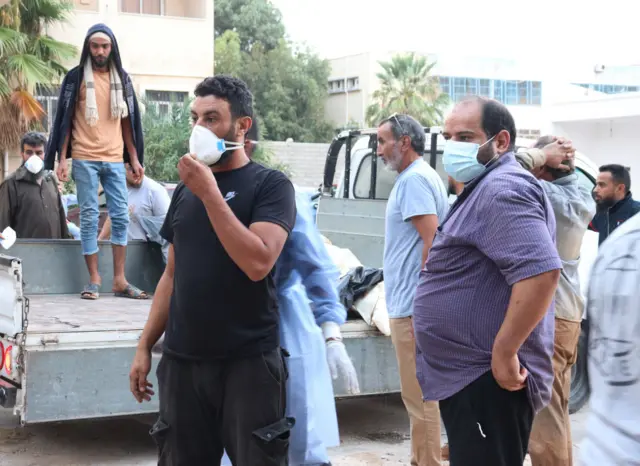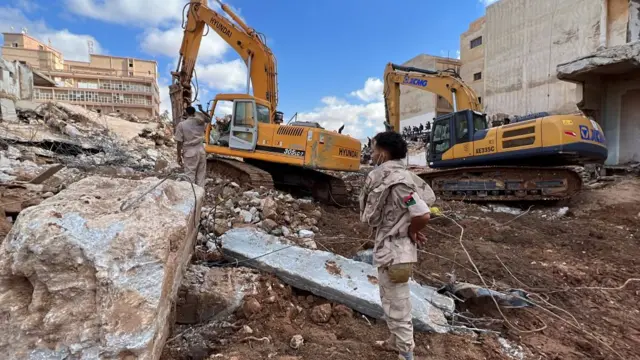'Don't forget Libya when it leaves the news cycle' - Red Crescentpublished at 16:31 BST 15 September 2023
 Ali Abbas Ahmadi
Ali Abbas Ahmadi
Live reporter
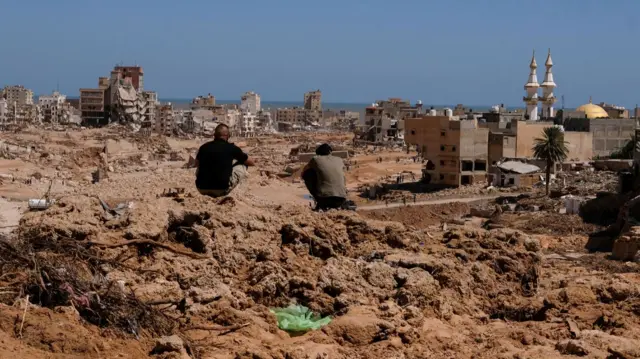 Image source, Reuters
Image source, ReutersMany of the deaths in Libya's floods could have been avoided, said a UN official
The international community must continue to pay attention to and support Libya even after it leaves the news cycle, says Tomasso Della Longa, a spokesperson from the International Federation of Red Cross and Red Crescent Societies (IFRC).
"Don't forget Libya when the [spotlight] moves away from Libya," he says.
Speaking to the BBC from Geneva, Della Longa says the people need sustainable, long term solutions to prevent future disasters from being so destructive.
A UN official quoted by the BBC's partner CBS told reporters, external that many of the deaths due to the floods could have been avoided, and better support in the years leading up to the disaster may have prevented it from causing so much damage.

